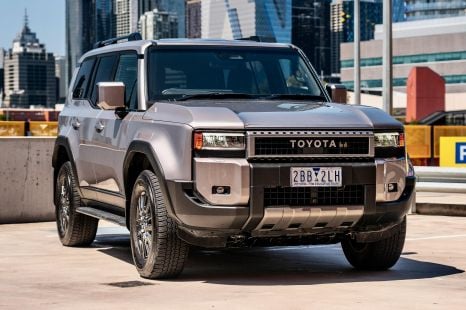

Max Davies
2025 Toyota Prado GXL review
3 Months Ago
The Toyota LandCruiser 300 remains a strong all-rounder that evolves on its predecessor, but price hikes are starting to bite.
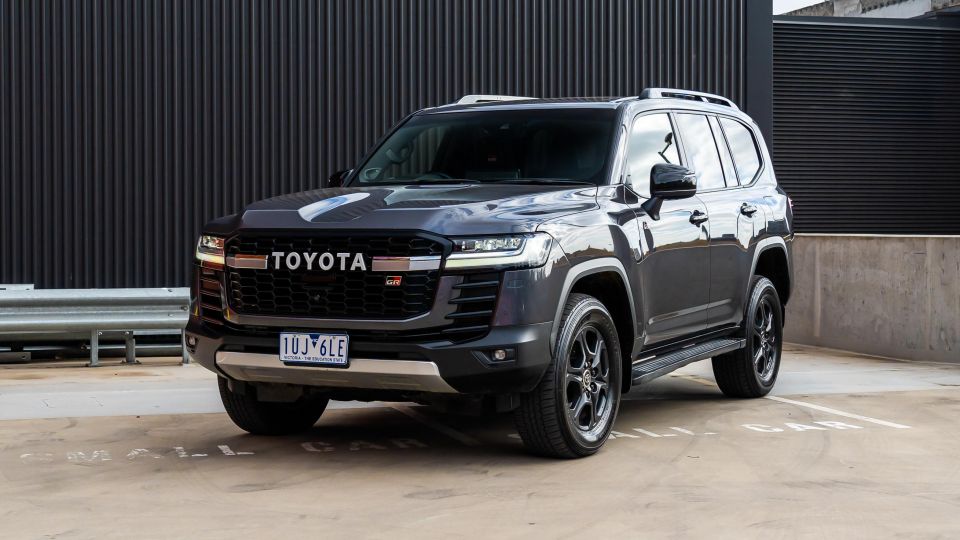


Contributor

Contributor


Contributor

Contributor
Quickly see how this car stacks up against its competition. Select any benchmark to see more details.
Where expert car reviews meet expert car buying – CarExpert gives you trusted advice, personalised service and real savings on your next new car.
The Toyota LandCruiser 300 Series trucks into 2024 unchanged under the skin.

The new “King Off The Road” was revealed in 2021 and hit Australia in 2022, with twin-turbo V6 diesel power in place of the old twin-turbo V8 diesel.
Enthusiasts were worried; our subsequent testing has proven the smaller new engine is seriously capable on-road, off-road, and with a trailer hitched up.
Given the stir it caused at launch, it’s hard to believe the LandCruiser 300 is now part of the automotive furniture in Australia… but in 2024, it’s a known quantity.
It still faces off with the Nissan Patrol in the battle for buyers who love towing, and with luxury four-wheel drives like the BMW X5 and Audi Q7 in the school run four-wheel drive sales race given the price of the GR Sport on test here.
Two years on from launch, it remains an impressive evolution of the legendary LandCruiser formula.
Prices for the LandCruiser 300 range rose for 2024. The GR Sport sits below the Sahara ZX in the range, falling $1000 short of flagship status.
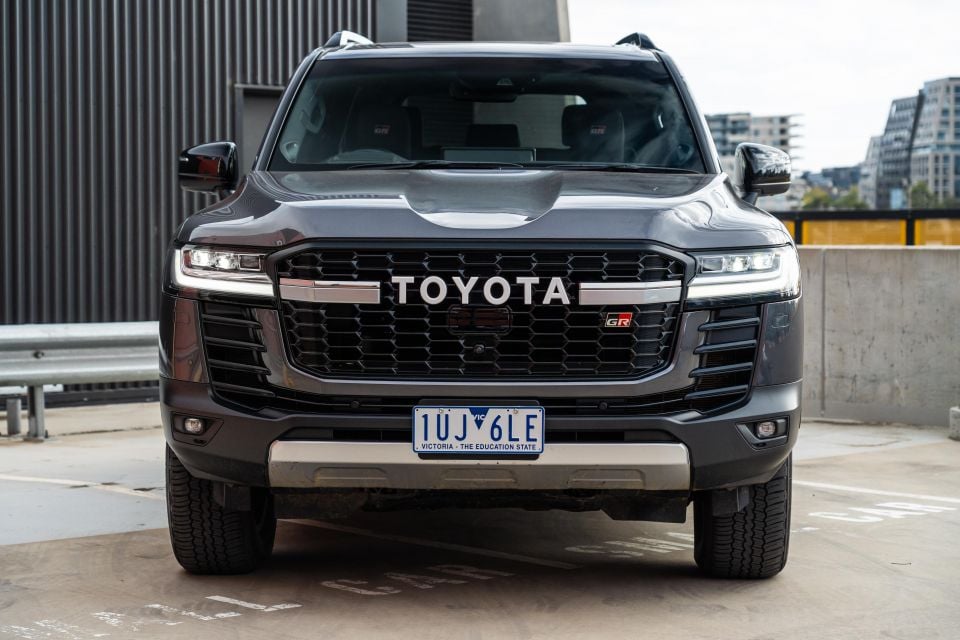
2024 Toyota LandCruiser 300 Series pricing:
Prices exclude on-road costs
To see how the LandCruiser compares with its rivals, use our comparison tool.
Buy your new car without the stress. It's fast, simple and completely free.

Great service from Travis and team, second time I have used this business would not hesitate to recommend them to anyone
Craig C.
Purchased a Ford Ranger in Sunshine Coast, QLD
CarExpert helped Craig save $7,224 on his Ford Ranger, now let us save you on your next new car.
Get your BEST priceThe LandCruiser GR Sport represents a huge step forward over the 200 Series, but wasn’t ultra-modern when it was revealed… and remains relatively old-school in 2024.
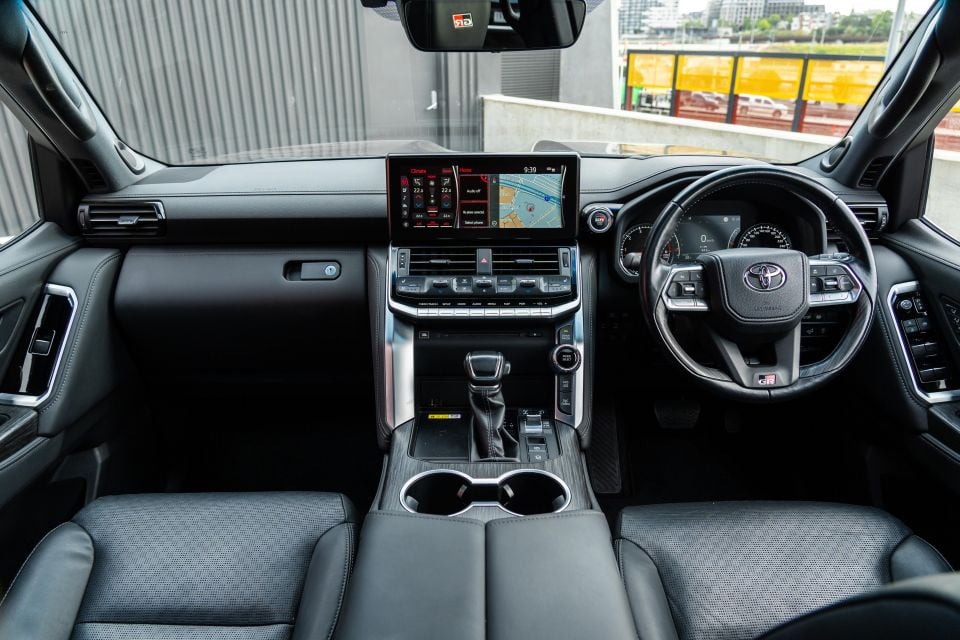
On some counts, that’s a really positive thing. There are plenty of easy-to-reach buttons and chunky switches for major off-road functions, and you could happily spend days, and days, and days behind the wheel.
The driver and passenger sit in well-stuffed armchairs trimmed in what feels like quality leather, and there’s enough support to prevent your bum going numb on long highway runs.
The seats are well bolstered, but have enough space for tradies or grey nomads who’ve been in a good paddock to not feel like they’re squeezed in.
The heating and cooling are welcome, as is the fact you can flick them into automatic and let them decide what the correct setting is based on your climate control.

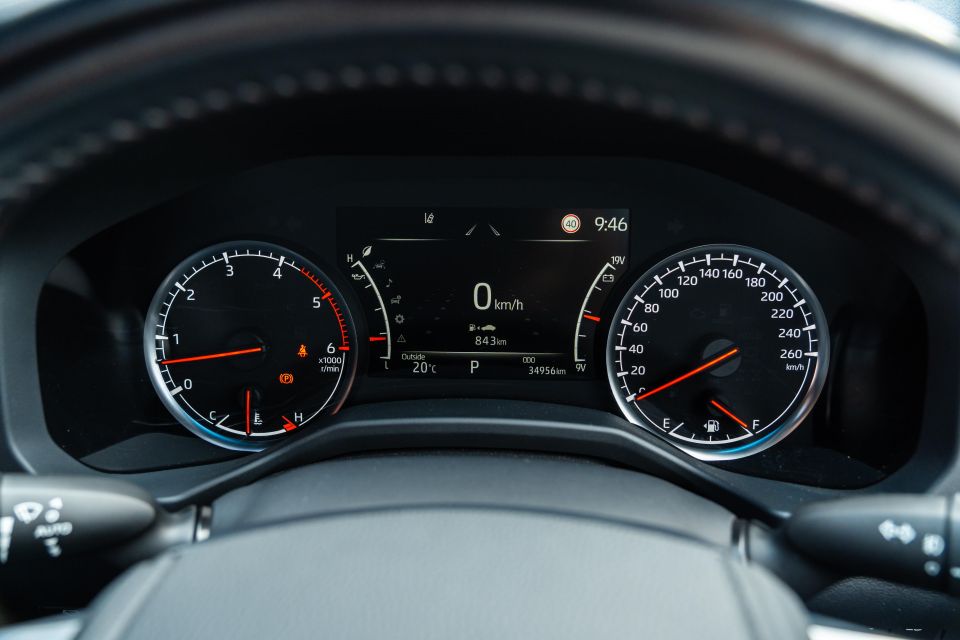
Facing the driver is a chunky leather-wrapped steering wheel, along with analogue dials flanking a pretty basic colour trip computer. It’s able to show off-road data, your speed, or fuel economy, but you’re now able to get a fully digital dash in a Corolla, so it really should be an option in the almost flagship LandCruiser.
The idea of a 12.3-inch central touchscreen display is a good one, and shows Toyota is aware it needs to offer better infotainment than was on offer in the last LandCruiser.
But its main interface is lifted from older cars such as the RAV4, where it has been replaced by a larger and more polished setup. The tech in the LandCruiser remains functional, but its sluggish responses and dated graphics were annoying in cars a third the price.
Smartphone mirroring is wired, and the factory navigation system is handy when you’re outside of reception – which you’d expect most LandCruiser owners will be at times. In a $140,000 flagship however it’s presentation isn’t really up to scratch.
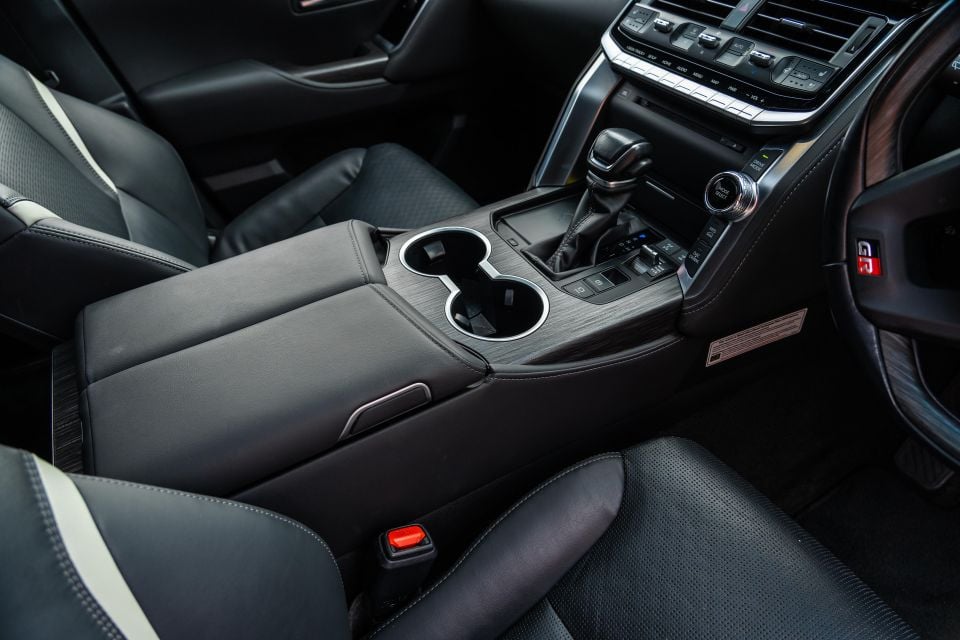

On the plus side, the dashboard blends a chunky design with decent tactility.
It’s logically laid-out and easy to use, even if you’ve got big hands or bad eyesight. Toyota has hidden the differential lock buttons down by the driver’s left knee, though, rather than grouping all the off-road controls in one place on the dash.
There’s a cool box beneath the central armrest with space for a pair of water bottles, and the door pockets are massive. The wireless phone charger on the transmission tunnel is far more usable than the tacked-on pad in the LC200, too.
The second row is a mixed bag. With dual USB-C charge points, a fold-down central armrest, air vents, and a separate climate control pod back there, the kids are going to be comfortable on long road trips.

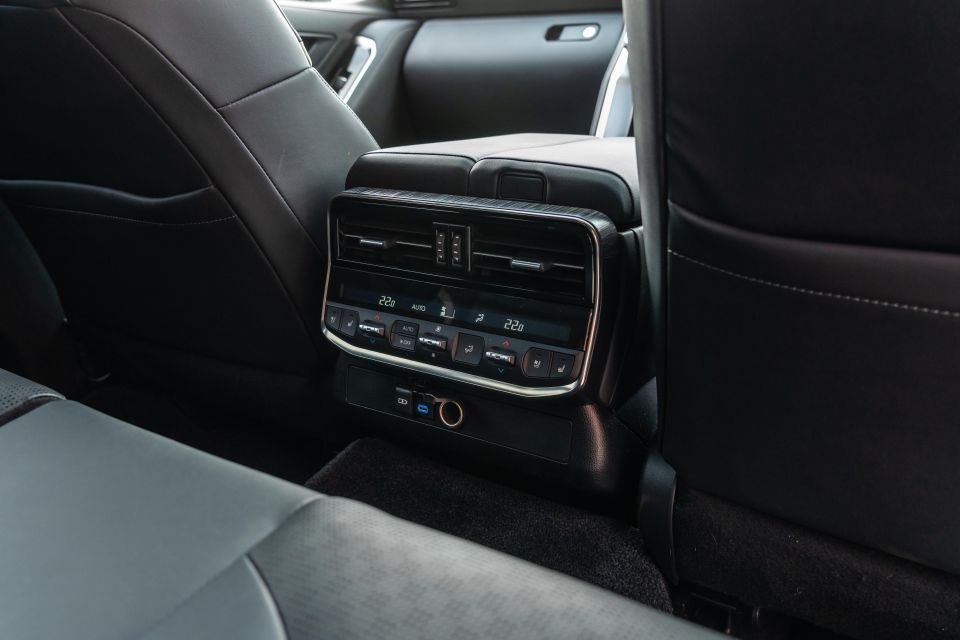
The upright profile and massive windows mean the view out is panoramic, too.
Headroom is excellent and legroom is decent behind tall front passengers, but the floor feels quite high – as is often the case in body-on-frame vehicles.
That means long-legged rear passengers are left feeling like their knees are around their ears, and makes it hard to stretch out on long trips. There’s a significant hump in the centre too, which means the middle seat is best left for small kids.
There’s no third row in the GR Sport, so being able to slide the second row further back would add to its usefulness and allow owners to take full advantage of the space on offer in what’s a massive car.
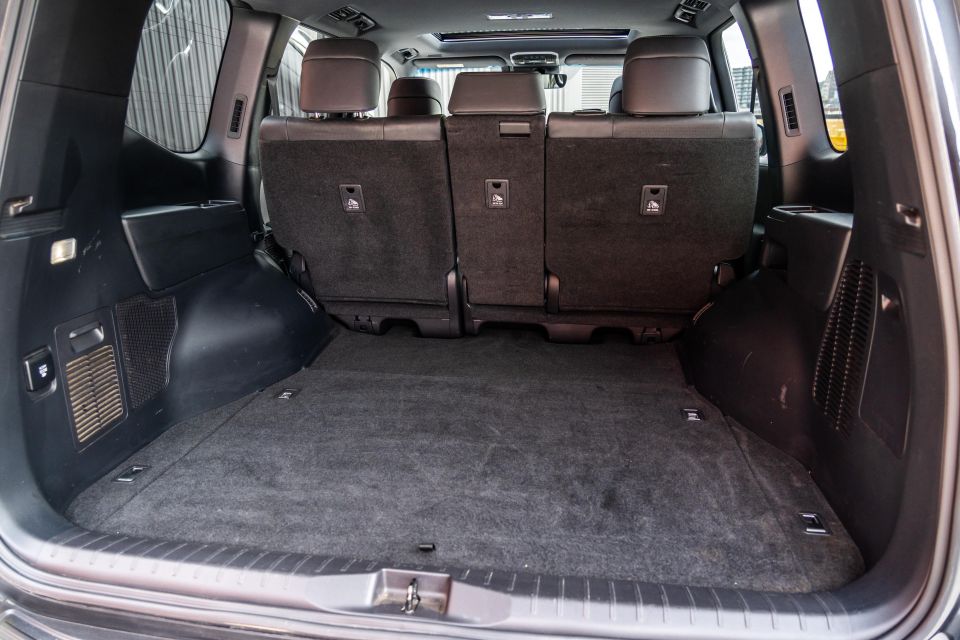
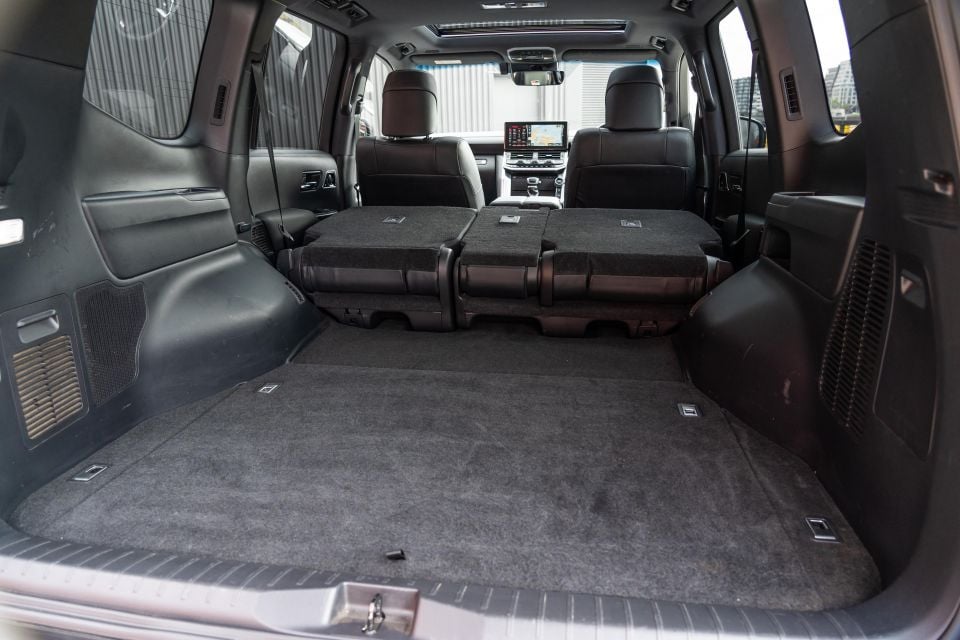
Claimed boot space is 1153 litres with the second row in place, expanding to a cavernous 2502 litres with them folded and tumbled forward. Although you don’t get sixth and seventh seats, the rear air vents and cupholders carry over.
You’ll be grateful for the powered tailgate, given how large it is. You need plenty of space behind you to open it, but once it’s raised the opening is van-like.
Some buyers were concerned about the death of the turbo-diesel V8 engine, but our experience of the LandCruiser 300 has so far shown those concerns were misplaced.
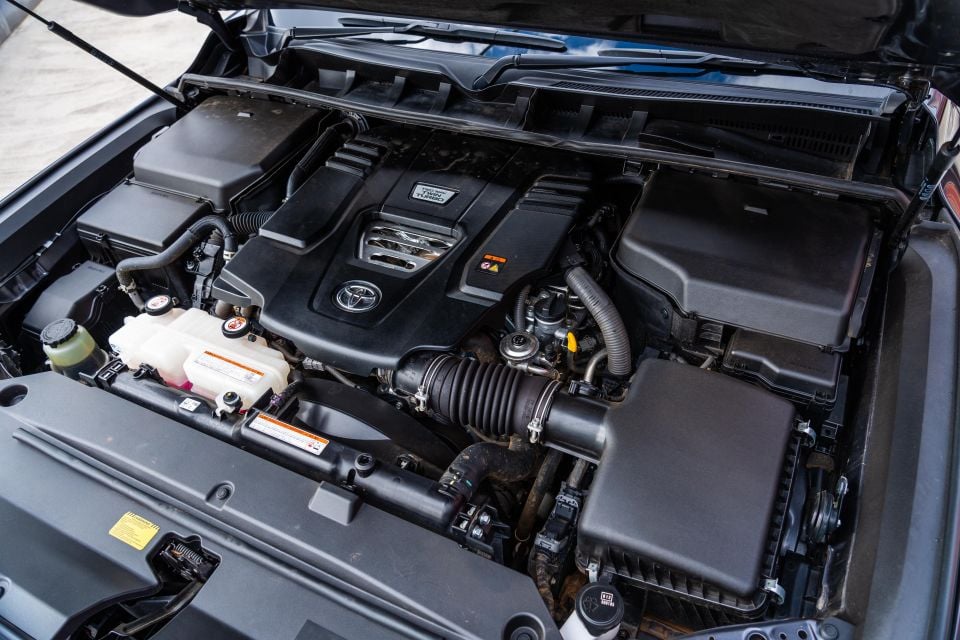
| Model | Toyota LandCruiser 300 GR Sport |
|---|---|
| Engine | 3.3L turbo-diesel V6 |
| Transmission | 10-speed automatic |
| Power | 227kW |
| Torque | 700Nm |
| Driven wheels | Four-wheel drive (full-time) |
| Fuel consumption (claimed) | 8.9L/100km |
| Fuel tank capacity | 110L (80 + 30L) |
| Kerb weight | 2630kg |
| Towing capacity | 3500kg braked + 750kg unbraked |
| Gross Vehicle Mass | 3280kg |
| Payload | 650kg |
| Approach angle | 32 degrees |
| Departure angle | 25 degrees |
| Ground clearance | 245mm |
| Wading depth | 700mm |
To see how the LandCruiser compares with its rivals, use our comparison tool.
It’s amazing how quickly we’ve become familiar with the LC300.

The view over the heavily scalloped bonnet still makes you feel like the king of the road, and it’s a big brute to thread through city streets, but there’s a reassuring polish to how it goes about its business.
The twin-turbo engine fires quietly and settles into a smooth idle, and it offers smooth low-down responses. Some small-displacement turbocharged engines have a moment of lag, before surging forward when the revs hit a certain mark and the boost kicks in.
The engine in the LC300 is impressively linear on constant throttle inputs, giving you exactly what you ask for rather than lurching forward as the turbochargers kick in. That makes it easier to manage in traffic, and a better companion when you need to precisely dole out the engine’s torque on tight off-road trails.
With light steering and decent all-round visibility, it’s a deceptively easy car to drive in town. Toyota’s cameras aren’t on the cutting edge, but they do make it easier to see what’s around you than would otherwise be the case.
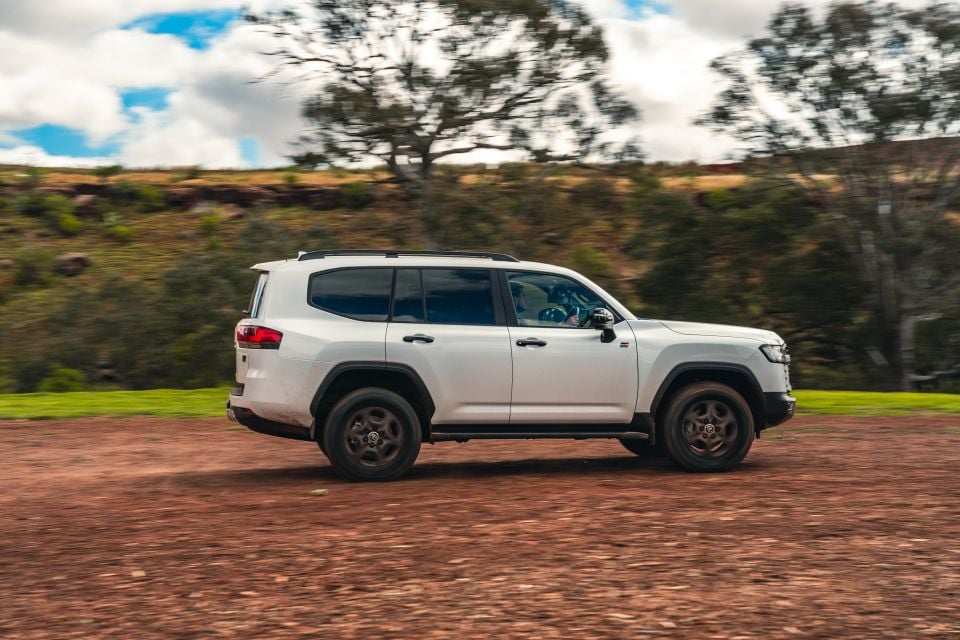
Put your foot down and, once the 10-speed automatic has sorted itself out, the GR Sport gets a move on. It really squeezes you back in the seat, as the bluff nose rises like the prow of a speedboat.
It feels fast off the mark given its size and weight, and offers plenty of punch for highway overtaking. It’s amazing to think of how many column inches and comments were dedicated to the death of the V8, given how effective the V6 has proven so far.
The transmission is smart enough to hang in the peak torque band between 1600 and 2600rpm, and there’s enough gears to make sure you’re never far from that band.
One of the calling cards of the GR Sport is its electronic Kinetic Dynamic Suspension System (that’s e-KDSS to you and me), which can independently lock and unlock the front and rear stabiliser bars.
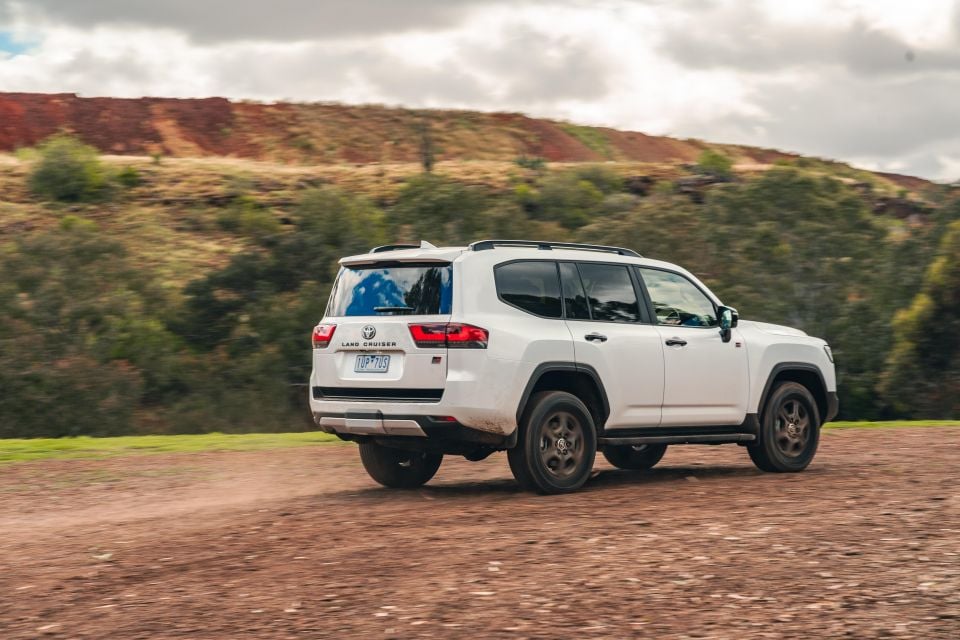
In conjunction with the car’s adaptive dampers, the system is designed to deliver a combination of mogul-crushing wheel articulation and more car-like on-road dynamics.
There is a definite difference between the drive modes, although that’s down to the adaptive dampers. In Comfort the car feels like a bit of a barge, floating along and letting the body make one, two, three movements over highway crests and dips. Flicking through Normal, Sport, and Sport Plus gradually tightens up the body control.
At launch we said the system is quite subtle in how it operates, relative to the 48V mild-hybrid-driven anti-roll system on offer in Volkswagen Group products. It remains that way in 2024; where you can feel the 48V system in a Touareg pushing against the vehicle’s mass in the corners, the e-KDSS doesn’t have the same impact on the road.
On the open road, the relaxed LC300 is a lovely place to spend time. There’s hardly any wind or road noise in the cabin at 100km/h, and the engine ticks over barely above idle at 100km/h.
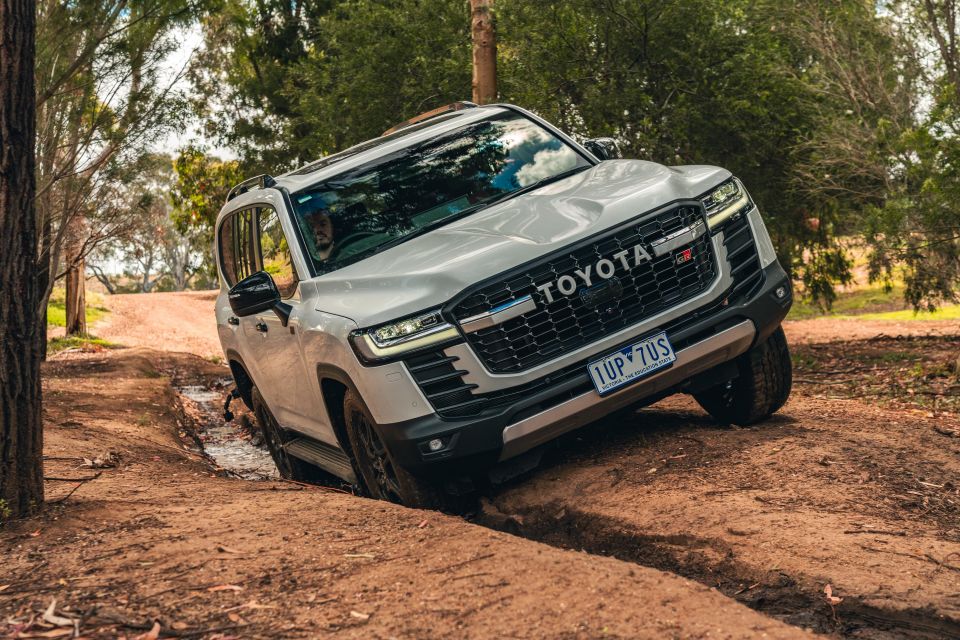
Thanks to a more modern suite of driver assists, the LandCruiser will maintain a gap to the car in front, and has a system that will actively steer keep you in your lane – but its lane-keeping assist is still brake-based, rather than steering you back into the lane as you drift.
The suite of systems are an improvement over the last car (or what’s offered in a Nissan Patrol), and the adaptive cruise in particular is well-tuned, but they also aren’t exactly ground-breaking given the price.
Of course, the LandCruiser is fearsomely capable off-road. In our recent 4WD SUV mega test, it passed all our tests with flying colours.
Our rollers showed the electronic driver assists are smartly tuned, and our physical tests proved even vehicles without the e-KDSS system have impressive wheel articulation. Hill-descent control kept the car’s mass in check nicely downhill, and the on-the-fly speed adjustments were effective.
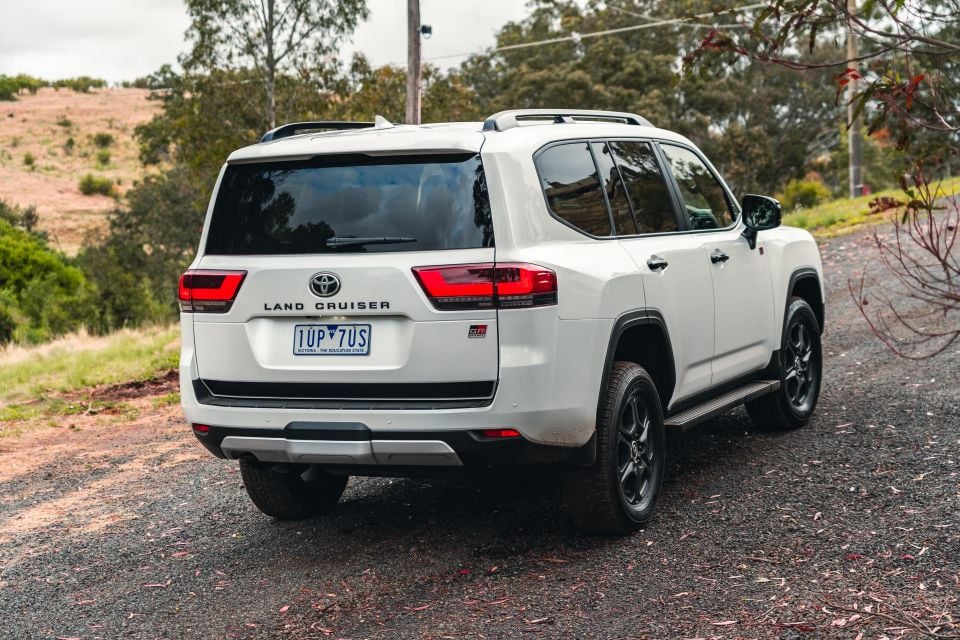
Where expert car reviews meet expert car buying – CarExpert gives you trusted advice, personalised service and real savings on your next new car.
As for towing? Our testing has found the LandCruiser is a confident performer with no nasty surprises, accelerating strongly uphill with a 2800kg trailer attached and downshifting on the downhill to offer engine braking.
The only real knock on its performance with a trailer attached was a feeling of floatiness over choppy roads, although the body was never truly out of control.
The 2024 Toyota LandCruiser 300 Series is available in six different variants. On test here is the almost flagship GR Sport.
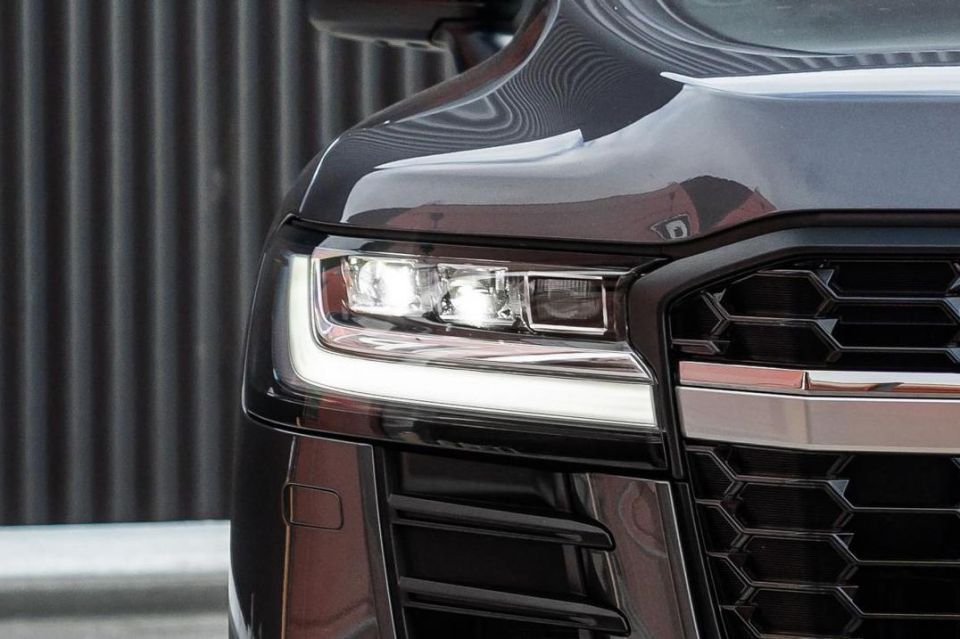

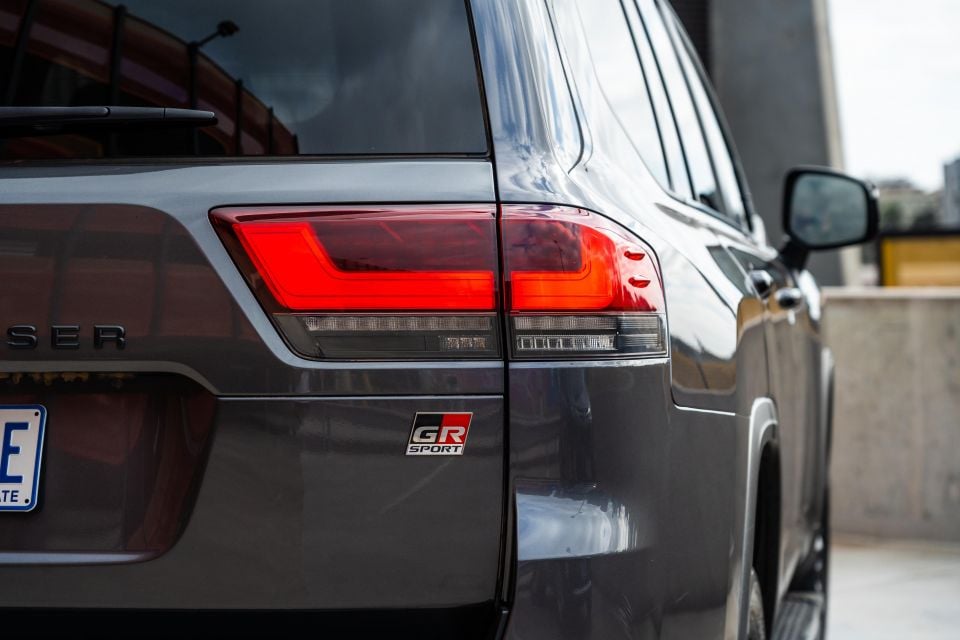

LandCruiser GX highlights:
LandCruiser GXL adds:
LandCruiser VX adds:
LandCruiser Sahara adds:
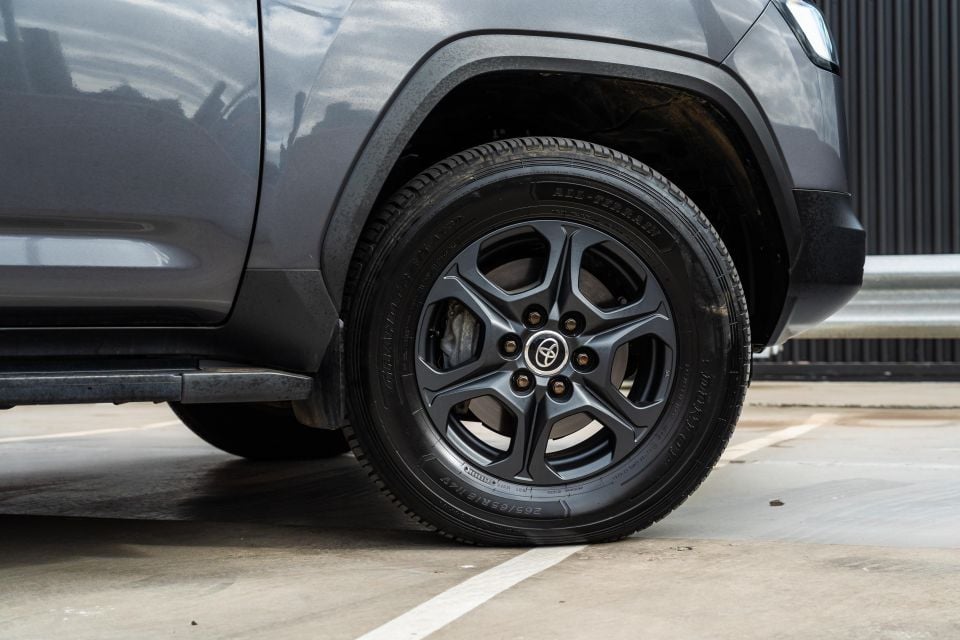

LandCruiser GR Sport adds:
The Toyota LandCruiser 300 has a five-star ANCAP safety rating based on testing carried out in 2022.
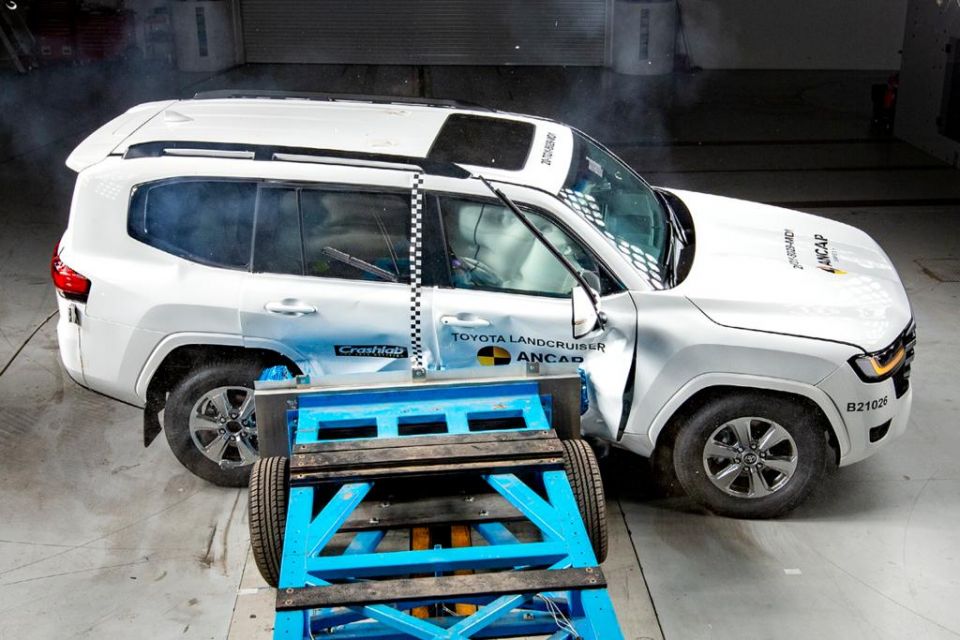
It scored 89 per cent for adult occupant protection, 88 per cent for child occupant protection, 81 per cent for vulnerable road user protection, and 77 per cent for safety assist.
Standard safety features across the range include:
LandCruiser 300 GXL adds:
LandCruiser 300 VX adds:
LandCruiser 300 GR Sport and Sahara ZX add:
The LandCruiser is backed by a five-year, unlimited-kilometre warranty – extended to seven years on the engine and driveline by servicing on time with a Toyota dealer.
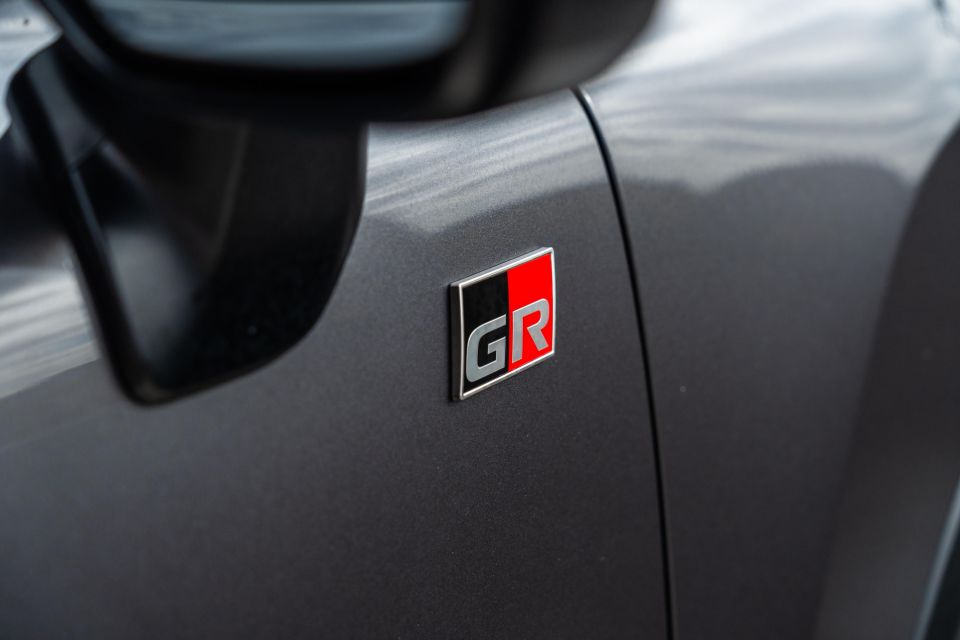
Maintenance is required every six months or 10,000 kilometres, rather than the 12-month intervals common among most rivals.
The first 10 services (five years or 100,000km worth) will each set you back $375 using the Toyota Service Advantage capped-price service program.
Buy your new car without the stress. It's fast, simple and completely free.

Great service from Travis and team, second time I have used this business would not hesitate to recommend them to anyone
Craig C.
Purchased a Ford Ranger in Sunshine Coast, QLD
CarExpert helped Craig save $7,224 on his Ford Ranger, now let us save you on your next new car.
Get your BEST priceThe LandCruiser is an icon for a reason.

The 300 Series is still a very impressive all-rounder, with a solid blend of on-road comfort, off-road ability, and towing talent – and it’s hard to deny the appeal of the GR Sport.
With two years on the road under its belt, we can also more confidently endorse the twin-turbocharged diesel V6 engine as a replacement for the legendary V8 from its predecessor, although some Toyota owners would say even a two year-old engine is barely run in…
Our complaints from launch have only been amplified by two years and multiple price rises, though.
The interior technology in the LandCruiser just isn’t up to scratch for a car worth more than $145,000 before on-road costs, and if you’re planning to spend your time on the school run instead of the traversing the Simpson Desert there are more luxurious options out there for similar money.
They’re simple things to fix, but they’d go a long way to making what’s already a good thing even better.

Click the images for the full gallery
MORE: Buy a Toyota LandCruiser 300 MORE: Everything Toyota LandCruiser 300
Where expert car reviews meet expert car buying – CarExpert gives you trusted advice, personalised service and real savings on your next new car.
Scott Collie is an automotive journalist based in Melbourne, Australia. Scott studied journalism at RMIT University and, after a lifelong obsession with everything automotive, started covering the car industry shortly afterwards. He has a passion for travel, and is an avid Melbourne Demons supporter.


Max Davies
3 Months Ago


Matt Campbell
2 Months Ago
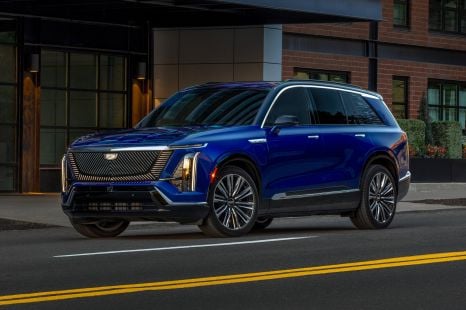

William Stopford
2 Months Ago
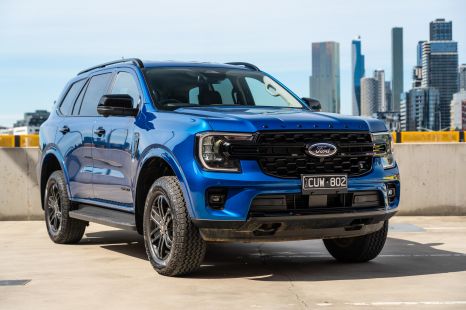

Josh Nevett
2 Months Ago


Max Davies
1 Month Ago


James Wong
27 Days Ago